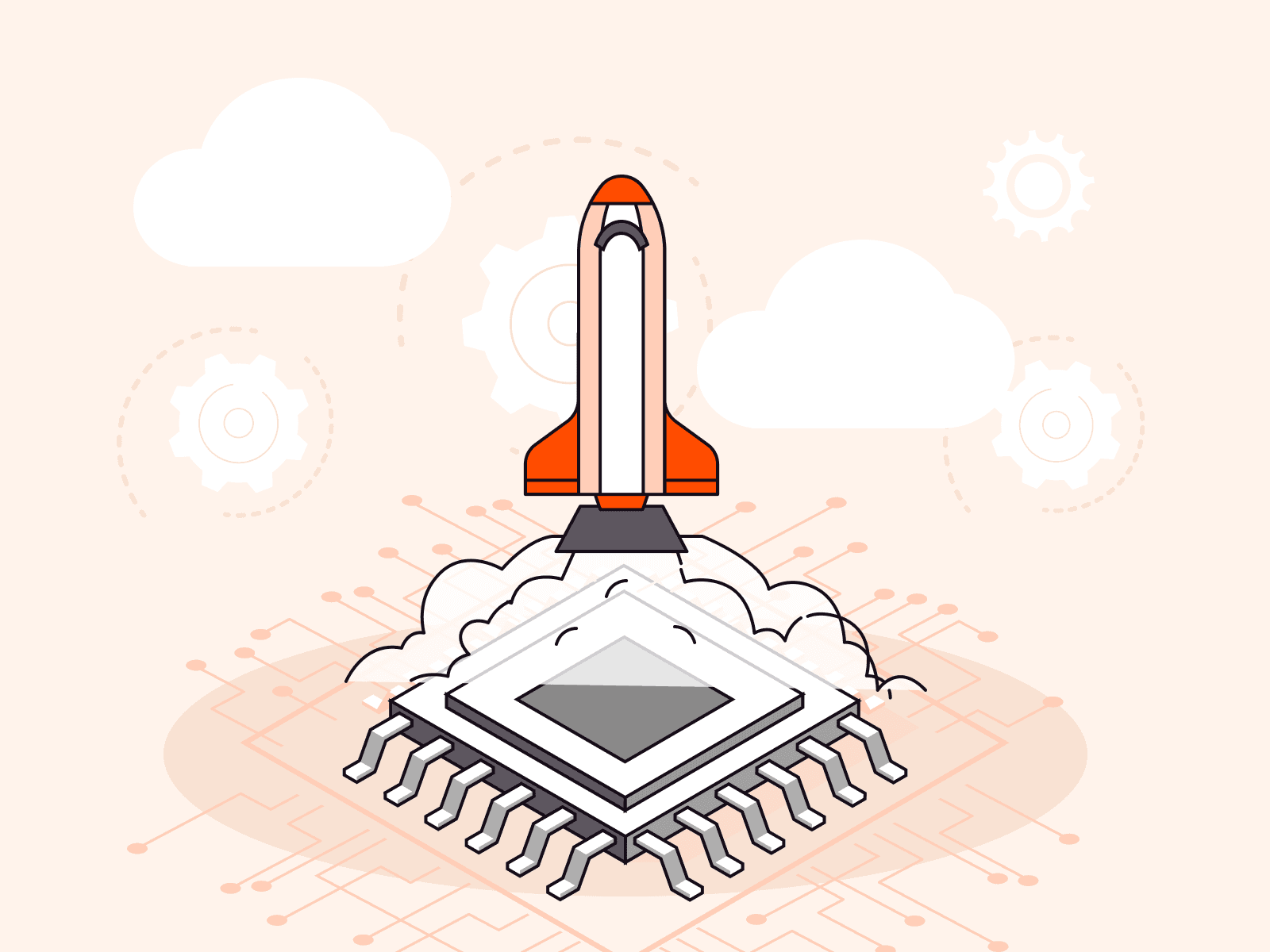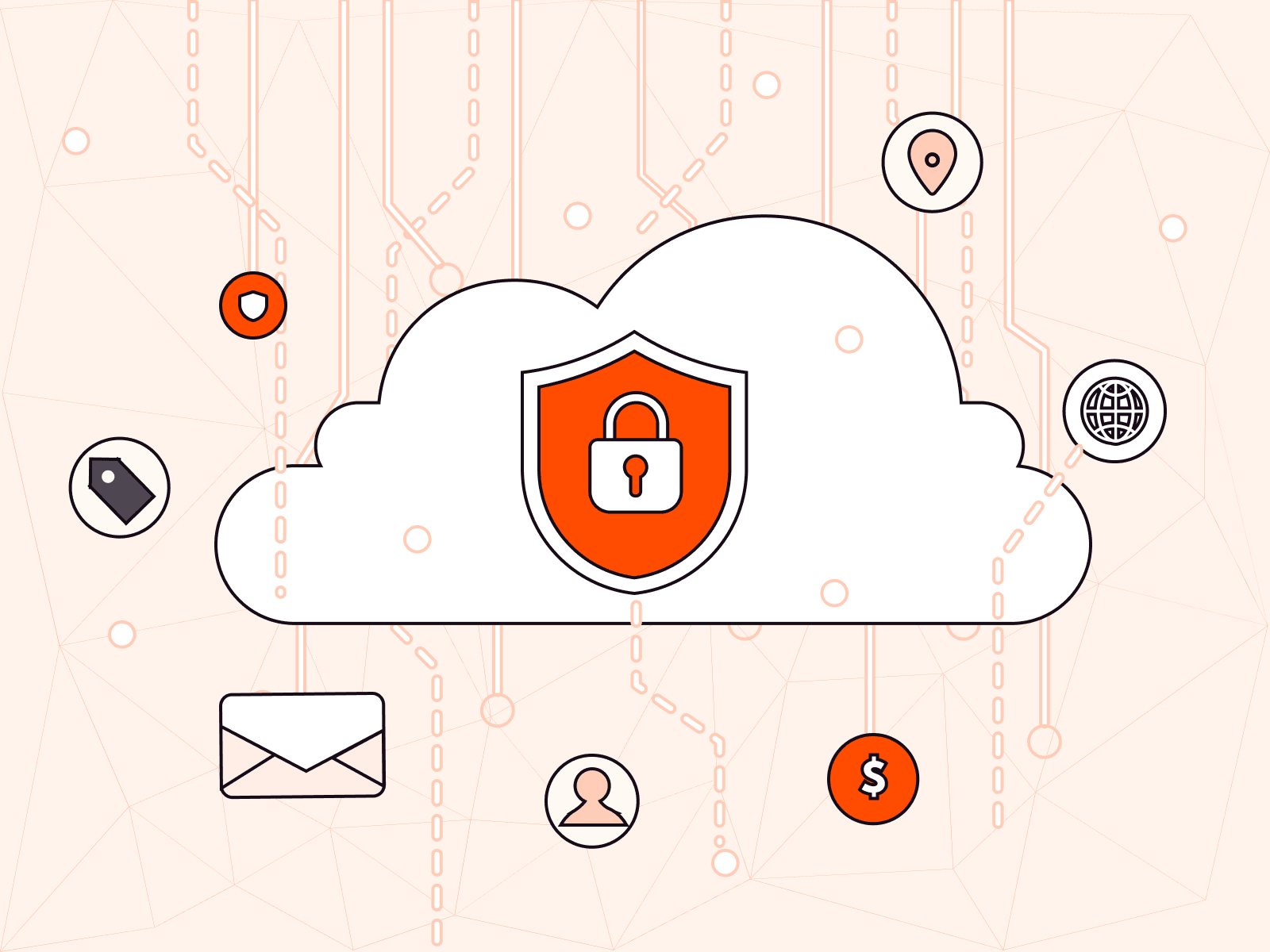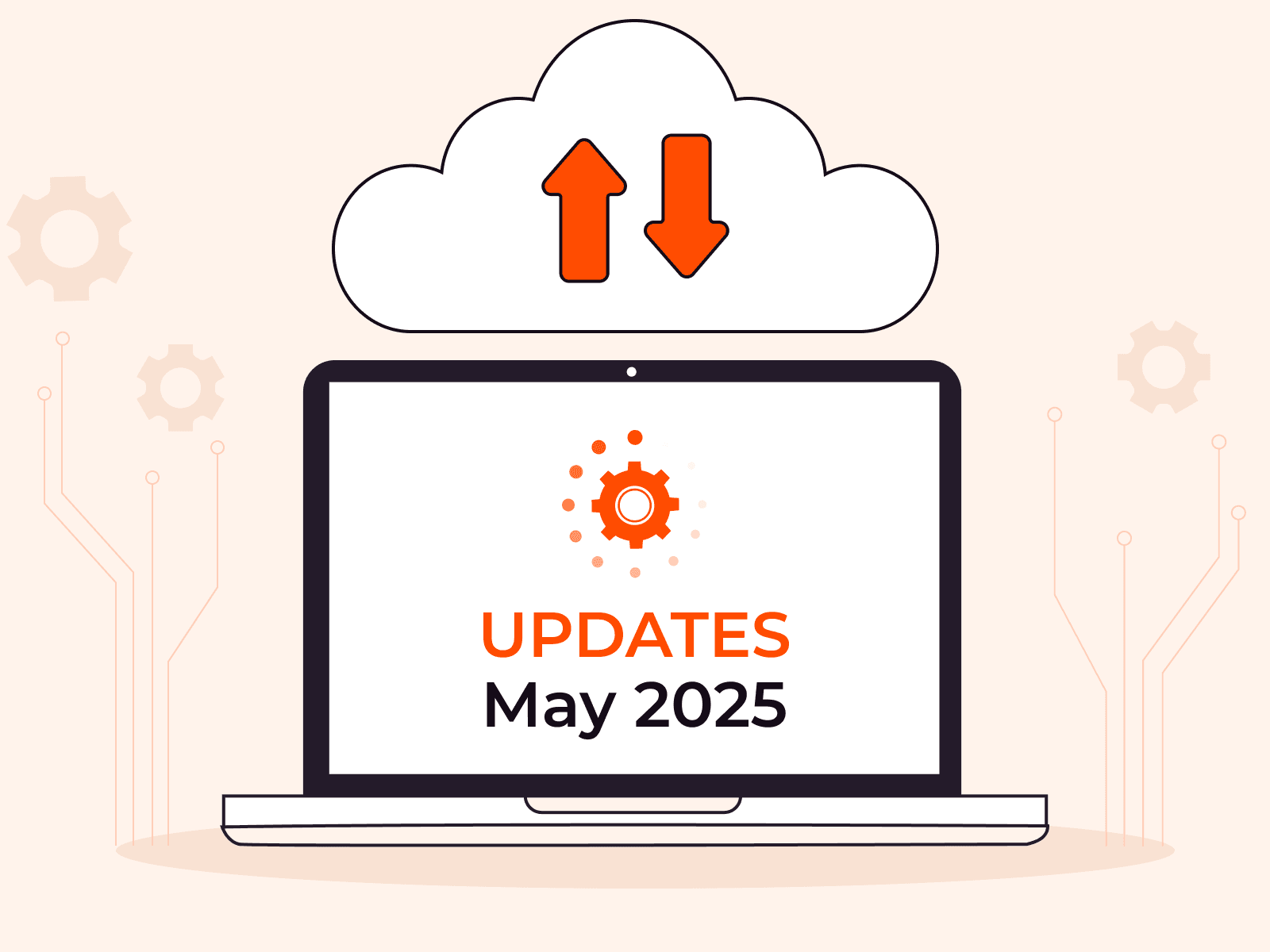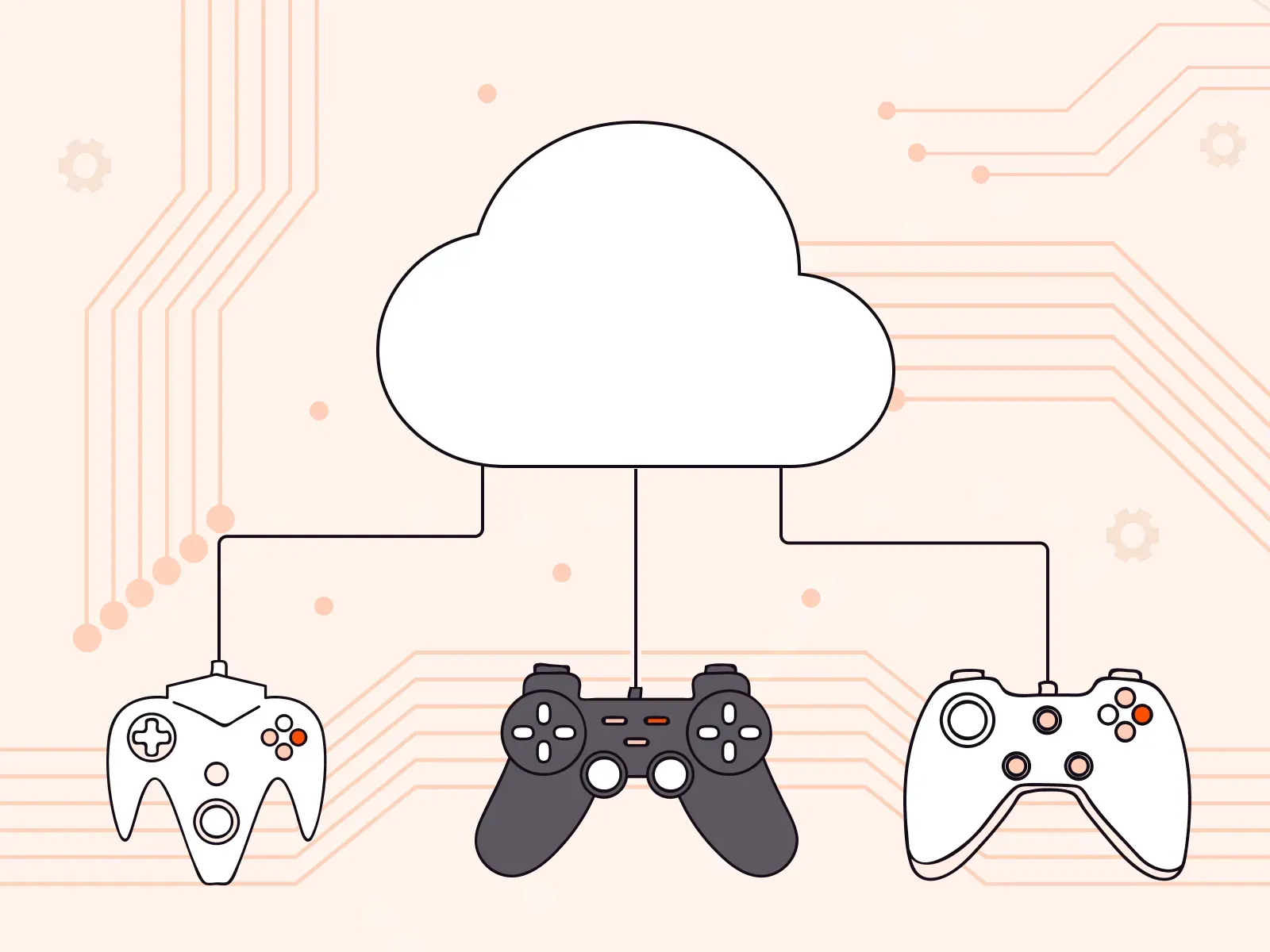How to optimize IT infrastructure spending
- February 3, 2022
- 7 min read

Business is spending a lot on IT. Gartner research company predicts that by the end of 2021, overall global IT infrastructure expenses should grow by 8.4% and reach $4.1 trillion.
Obviously, any business would like to pay less for the same results.
In this article, we will tell you about the main ways to optimize IT infrastructure spending.
What comprises IT infrastructure spending
First of all, to spend less, you need to clearly understand what you’re spending your money on.
All spending can be divided into two categories: CapEx (capital expenses—one-time) and OpEx (operational—recurring). The expenses will differ depending on whether you’re using your own equipment or leasing the computational capacities.
1. Own infrastructure
CapEx:
- Purchase of hardware and software
- Teaching your employees to work with the new infrastructure, or hiring new employees
OpEx:
- Infrastructure repairs, SPTA expenses (spare parts, tools and accessories)
- Expendables
- Salary of the team working with the infrastructure and ensuring its maintenance
- Expenses to ensure the maximum availability of the services: backup equipment, communication channels, power supply, etc.
- Expenses to update, store and dispose of the outdated equipment
- Logistics expenses
- Rent of the office where the equipment is stored
- Power expenses
- Internet provider expenses
2. Computational capacity leasing
If you’re leasing your capacities from a cloud provider, there will be less expenditure items.
CapEx:
- Teaching your employees to work with the new infrastructure, or hiring new employees
OpEx:
- Expenses on the provider’s services
- Salary of the team working with the cloud solutions
IT audit—looking for points to save money
In order to understand how spending can be optimized, the first thing to do is a good analysis of all the infrastructure.
IT audit is often used to find problems in the system and unnecessary spending items. But even if you’re 100% sure that everything is organized perfectly well, a detailed check will help you find things that can be optimized first.
Instead of running the audit by yourself, we recommend that you hire independent experts.
The experienced specialists will be able to run a really deep and complex analysis and create a plan to optimize IT spending.
The most important thing here is finding a truly reliable auditor. In looking for one, definitely check for ways they can confirm their expertise and examine their clients’ reviews.
Virtualization—main path to cutting expenses
Many experts recommend transfer to the cloud. 94% of CTOs who took part in the survey published by TechRepublic claim that migration to the cloud cuts expenses on infrastructure installation and service. And 47% of the respondents also noted that cloud technologies helped their companies to cut IT infrastructure expenses by 30–50%.
How migration to the cloud helps cut expenses
1. No hardware downtime. Usuallyы, when a company uses its own private servers, it has to buy more than it normally needs: the extra capacity will be useful in case of sudden breakdowns or traffic surges. However, for most of the time, the equipment is idle, and the company still has to invest in its maintenance.
In the cloud, though, you can lease precisely the amount you need and only pay for the resources that you actually use. In case of a sudden traffic surge, you can quickly order extra capacity, and then turn it off when it becomes unnecessary.
2. Easy scalability. If you use your own infrastructure, you’ll have to buy new equipment as the project grows. It might take you months for your infrastructure to be delivered, installed, and set up. If your business is growing fast, you might just not have the time: there won’t be enough resources, your services will start working worse, and you’ll lose a part of your clients at such an important stage.
In the cloud, if the project is growing quickly, you’ll be able to grow the computational capacities just in a couple clicks. The services will always be available, even with a big influx of traffic. Your clients will be happy, and your business will keep growing and remain profitable.
3. Provider takes care of updating the equipment. With your own infrastructure, you have to manage timely updates yourself,—and with the cloud, it will be the vendor’s business.
A reliable cloud provider regularly updates the equipment. The system won’t have any outdated, low-efficiency equipment that only increases your IT expenditures.
4. Lower expenses on the team. The cloud provider takes up some of the tasks that otherwise would have to be done by your own employees. It manages the equipment, takes care of its condition, updates it from time to time, and might also manage other technical tasks. Everything depends on the company and the selected services.
Your team doesn’t have to spend time on that and can focus on other, more important things to do.
5. Access to cloud platform tools. Besides computational capacities, many providers also offer other tools useful for your business.
For example, in Gcore Cloud you can use not only virtual machines and physical servers, but also:
- AI platform—a set of tools to speed up machine learning
- App templates and ready-to-use services from the catalog
These tools will help you do certain tasks quicker (for example, speeding up the development and market launch of new products), thus making your work more efficient and allowing you to earn more profits.
6. Easier to control the expenses. Switching to the cloud lowers the number of expenditure items in general. You don’t have to rent space to store the equipment or pay for the power. The updating and maintenance are covered by the provider. Out of the many factors influencing IT expenditure, there are only service payment and salaries of your specialists working with the cloud.
The less expenditure items there are, the easier it is to control them.
Gcore Cloud expenditure management tools
In order to use the cloud resources as rationally as possible, the provider should offer convenient tools to organize the infrastructure and manage expenditures.
We tried to make sure our clients can easily manage computational capacities, follow their consumption, and plan the budget better.
1. Convenient resource management
In our cloud, you’ll be able to distribute the computational capacities by projects and follow how much each of them is consuming.

It will be easier to make sure each department has enough resources and not to overspend.
You’ll be able to provide different access levels to different members of your team.
And you’ll be able to manage infrastructure not only through the panel but also though API and Terraform.
2. Billing statistics
You’ll be able to get the statistics of resources consumed, manage your expenses, predict your load, and correctly plan the budget for the future.
3. Customer reports
You can also understand how much resources you’re using up and how much you’re spending on it with customer reports.
You can check the general statistics or the reports for individual projects. The indicators can also be sorted by region or type of cloud services (like individually checking the expenses for all virtual machines or IP addresses).

Additionally, our Cloud is:
- Powerful. The servers are located in Tier IV data centers (the highest level of reliability and failure tolerance).
- Reliable. SLA 99.95% with financial guarantees, PCI DSS and ISO 27001 certification.
- Economical. On average, our prices are 30% lower than those of other global providers.

We’ve already helped many companies reduce expenses and time-to-market. For example, one of our cloud clients is Wargaming, the company that used our cloud tech to speed up product testing and work with partners more efficiently.
Automation of IT team work
Similar routine tasks take up your employees’ time, not allowing them to focus on what’s really important. That slows down the operation of the team, reduces its efficiency, which means you get less profits.
To change this situation, one can use a variety of tools. It’s much easier to do in the cloud.
As we’ve already said, our cloud can be managed via API. Your employees will be able to automate routine operations and tend to more important business.
Besides, for some of the tasks, the solution has been already found. We’ve already mentioned our AI platform. So, for example, if you’re developing AI-based software, you don’t have to design your solutions from scratch—you can just connect an AI platform and use ready modules for machine learning, which will reduce the development process severalfold.
AI platform is just one example. There are a lot of software solutions and templates which will allow you to take some of the routine load off the team, speed up the development, make work with data easier, and so on.
Yes, many of these services are not free. But the sum you end up saving might be much bigger than what you spend on the service.
Reasonable management of IT infrastructure
So, you’ve audited all the systems, moved to the cloud, automated the processes, and sorted everything as much as you can. Now your IT infrastructure expenses are supposed to go down.
But everything on the market keeps changing. New tasks appear, your business grows, and your infrastructure grows with it. Controlling expenses, optimizing them, and making sure all resources are used rationally is not so easy, especially when you’re growing fast.
To avoid the problems and the unnecessary expenses, you need to entrust IT infrastructure management to highly experienced specialists.
But it might be hard to find real professionals, and you might end up having to open a whole department for reasonable management. You will have to find employees and provide workplaces for them. All that takes time and money.
There’s another option, simpler and more profitable: outsourcing all IT infrastructure management.
What will it do for you?
- You entrust management to experienced professionals.
- You don’t waste time for searching, hiring and teaching employees.
- You reduce the load on your team and can fully focus on business development.
The priority here is finding a good contractor. To make the right choice, study the company’s cases and check the reviews. Find out what services you will receive, and what guarantees you can be provided.
You can also order IT outsourcing services from us. Gcore is an expert in high-load systems. We managed to build a Guinness World Records infrastructure from scratch.
- We will cover any of your business needs, from architecture planning to full operation of ready-to-use solutions.
- We will provide for you a team of engineers that will be responsible for the system operation and available 24/7.
- We will protect your infrastructure from cyberattacks.
- We use a personalized approach, analyzing your business in detail and offering the best solution.
You can choose various sets of services, depending on your needs: from colocation (placing your equipment in our data centers) to full outsourcing.
To sum it up
- Business is spending a lot of money on IT. In 2021, the overall global spending in the area will increase by 8.4% and reach $4.1 trillion.
- IT expenditure is made up from a lot of different factors: cost of equipment and its maintenance, employee salaries, rent and power costs, and many other things.
- To reduce the expenditure, one should start with a full audit—preferably with third-party experts. They will be able to locate the areas in which you could save money and make your optimization plan.
- A good way to cut expenditures is moving your infrastructure into the cloud. You’ll be able to avoid downtime, pay only for what you actually use, and reduce the load on your team. It will also become easier to control your expenses.
- Examine how your IT department works. Maybe some of the tasks can be automated. Your employees will get rid of the routine and spend more time doing more important work.
- To maximally reduce infrastructure spending, it’s very important to manage it correctly. It’s best to leave this complex task to professionals. Gcore are specialized in high-load system management. You’ll be able to focus on project development, while we’ll take care of all technical tasks.
Tell us about your project, and we’ll select the best solution for you.
Related articles
Subscribe to our newsletter
Get the latest industry trends, exclusive insights, and Gcore updates delivered straight to your inbox.






